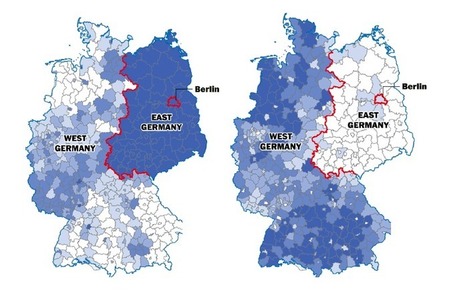When you learned about The Periodic Table of Elements in high school, it probably didn’t look like this. Above, we have a different way of visualizing the elements. Created by Professor William F. Sheehan at Santa Clara University in 1970, this chart takes the elements (usually shown like this) and scales them relative to their abundance on the Earth’s surface.
Get Started for FREE
Sign up with Facebook Sign up with X
I don't have a Facebook or a X account

 Your new post is loading... Your new post is loading...
|

Peter Phillips's curator insight,
November 6, 2014 11:43 AM
50 years of communist rule still affect opportunities in Germany today, as these maps show. What they don't show is the social mirror that each provides to the other and the rich discussions about social policy that result. Reunification has been an expensive exercise for Germany, however one that it is committed to.
Jacob Conklin's curator insight,
February 12, 2015 6:20 PM
The Soviet Union collapsed in 1991, but its influence is still present in today's Germany. History plays a key role in the shaping of political boundaries and that history is clearly evident in Germany. The line where the Berlin wall once stood still divides the country economically. The western part of Germany is far more economically affluent than the east. The USSR may be gone, but its influence still remains.
BrianCaldwell7's curator insight,
April 5, 2016 8:14 AM
These two maps (unemployment on the left and disposable income on the right) are but two examples in this article that highlights the lingering distinctions between the two parts of Germany that were reunited 25 years ago. The social geographies imposed by the Iron Curtain and the Berlin Wall are still being felt from this relic border and will for years to come. Tags: Germany, industry, labor, economic, historical, political, borders. |











Anamorphose éclairante
elements abundance